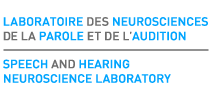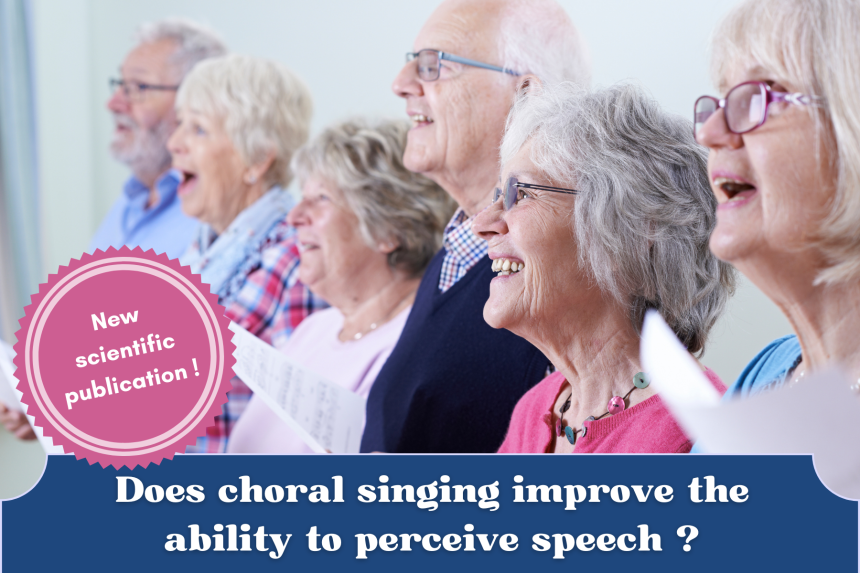
The ability to perceive speech in the presence of noise declines with age. However, the practice of certain musical activities, such as singing, could minimize this decline. But is this the case for everyone who sings? And how can we explain the link between singing and speech perception?
A study from our lab—just published in the journal Brain Structure and Function—explored the conditions required to observe a benefit of singing, as well as the neurological mechanisms involved using magnetic resonance imaging (MRI).
Two members of our lab contributed to writing this article: Maxime Perron, a former master’s student, who led the study, and Pascale Tremblay, who heads the lab. They collaborated with a researcher from Université Laval, Josée Vaillancourt, professor at the Faculty of Music and specialist in choral singing.
For the study, 72 adults aged 20 to 87 were recruited. Half of them had been singing in a choir for at least two years and for at least one hour per week. The other half did not practise any musical activity on a regular basis. The two groups were comparable in terms of age, level of education, number of languages spoken, hearing, and cognitive functioning. They only differed in terms of singing.
In total, participants took part in three visits. During two of the visits, participants completed questionnaires and various tests, including a test of speech perception in noise. During this test, participants were asked to indicate by pressing a button whether pairs of syllables presented through a set of headphones, overlaid on a background noise, were the same (e.g., fal – fal) or different (e.g., fal – val). Among other things, the team measured the speed at which people responded, i.e., response times, as well as the percentage of correct responses. During the other visit, images of the brain were acquired using magnetic resonance imaging (MRI). The brain images obtained from this examination allowed the team to measure the volume, area, and thickness of the cortex of 14 brain regions involved in auditory and speech processing (see Figure 1).
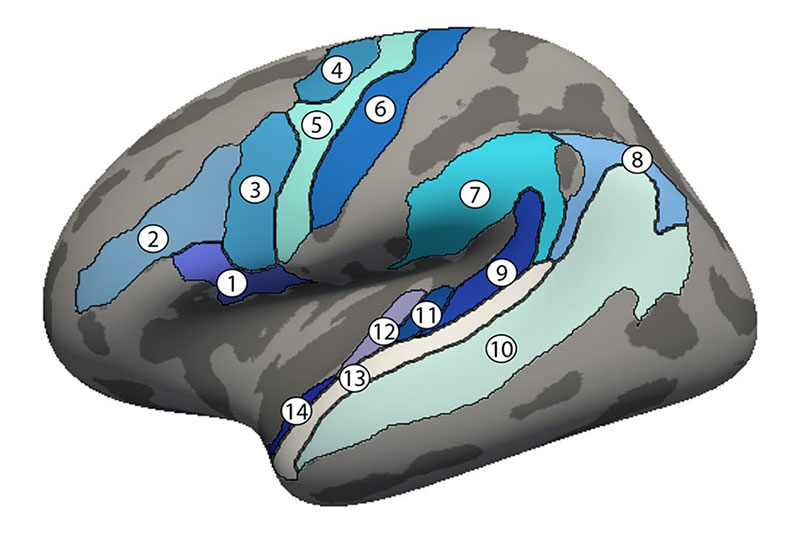
Figure 1. Brain regions for which the volume, area and thickness of the cortex were measured.
Analyses showed a decline in speech perception performance with age in both groups of participants (singers and non-singers), meaning that singing was not associated with reduced aging effects. However, factors associated with a lesser age-related decline in speech perception were identified in the group of singers. The decline was slighter in those who sang in multiple languages, who sang more frequently, and who had received singing training (see Figure 2). These results indicate that the benefits of choral singing on speech in noise perception depend on the conditions of practice.
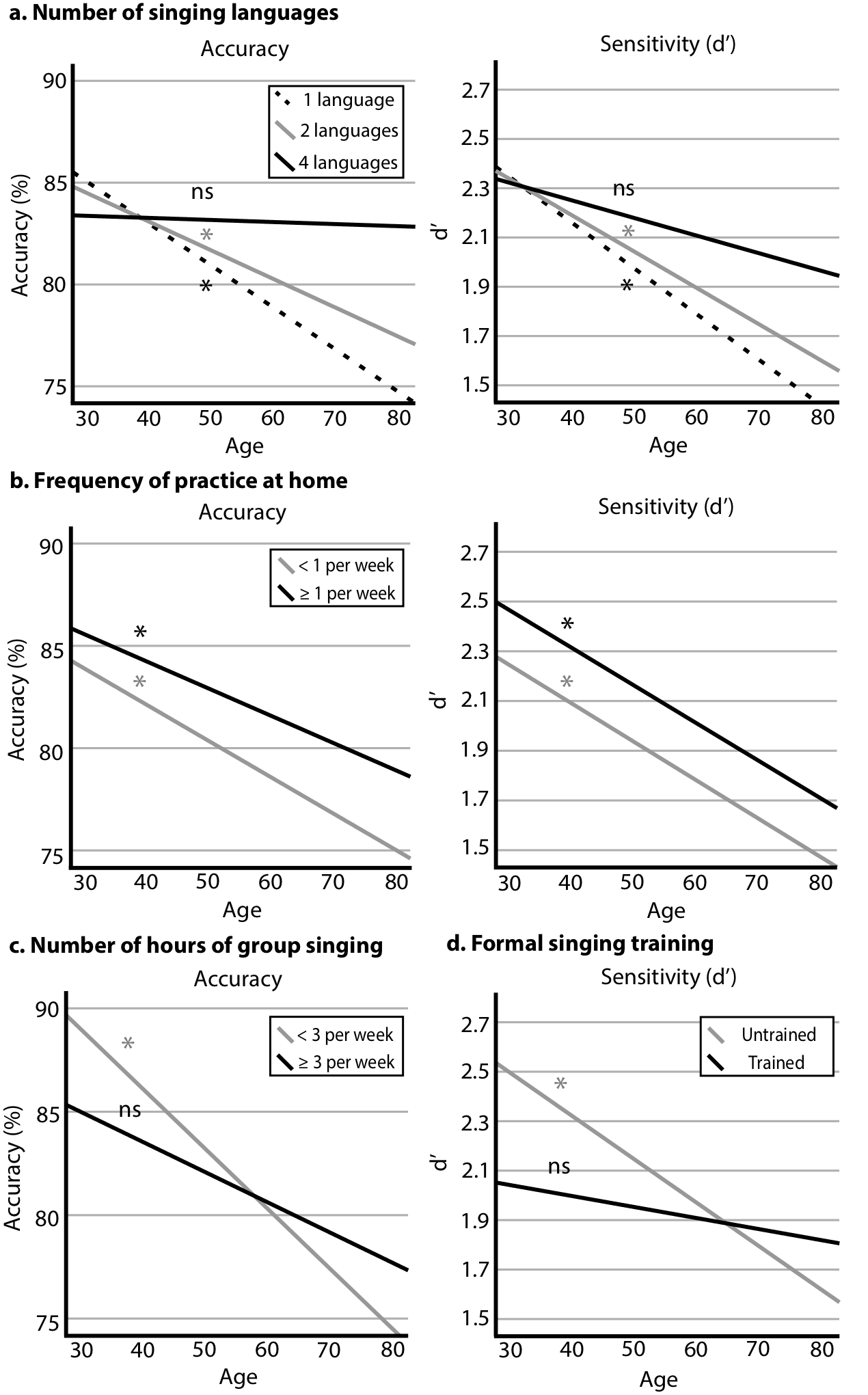
Figure 2. Relationship between age, singing practice characteristics, and the ability to perceive speech in noise. N. B.: The higher the sensitivity (d’), the better the ability to discriminate syllables during the test.
Our analyses also indicated that these singing-related benefits were associated with cortical thickness in several brain regions (see Figure 3). For example, singing in multiple languages was associated with better speech perception through its influence on cortical thickness in the primary auditory areas (superior temporal sulcus, transverse temporal gyrus) and the planum polare of the right hemisphere, as well as the lateral side of the superior temporal gyrus and precentral gyrus of the left and right hemispheres (regions identified in blue and white in Figure 3A).
Singing involves auditory and motor learning, which requires the coordination of the tongue, the lip, the vocal cords, and the respiratory system to produce the required lyrics at a specific note. As such, singing could help maintain the mechanisms of auditory-motor integration in aging, and, in turn, reduce the decline of speech perception in noise in older adults!
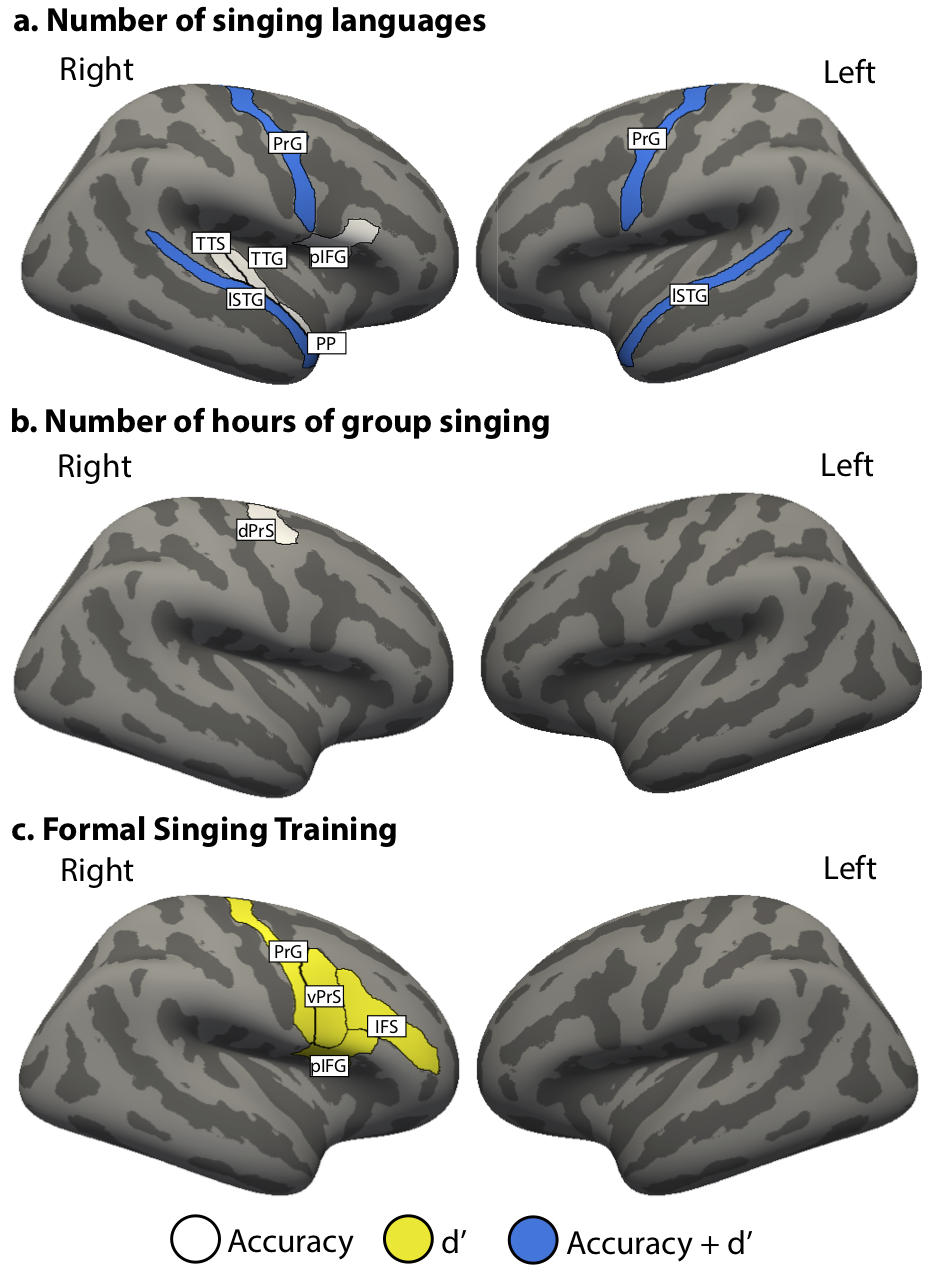
Figure 3. Illustration of the brain regions for which certain singing conditions modify the relationship between age and the ability to perceive speech in noise through cortical thickness.
In conclusion, our study clarifies the conditions required to derive benefits from choral singing and the neurological mechanisms involved. A thorough understanding of the effects of singing is necessary to develop effective, evidence-based strategies for maintaining or restoring communication skills throughout life! Of course, additional studies are needed to replicate these results, but our results do provide new and important information that contributes to pave the way for the development of such strategies. Stay tuned!
We would like to take this opportunity to thank everyone who participated in this study!
Further readings:
- Magnetic resonance imaging (MRI)
- Series about speech sounds processing (go to text 1)
- New scientific article on the impact of singing on brain networks
- A forest of neurons
